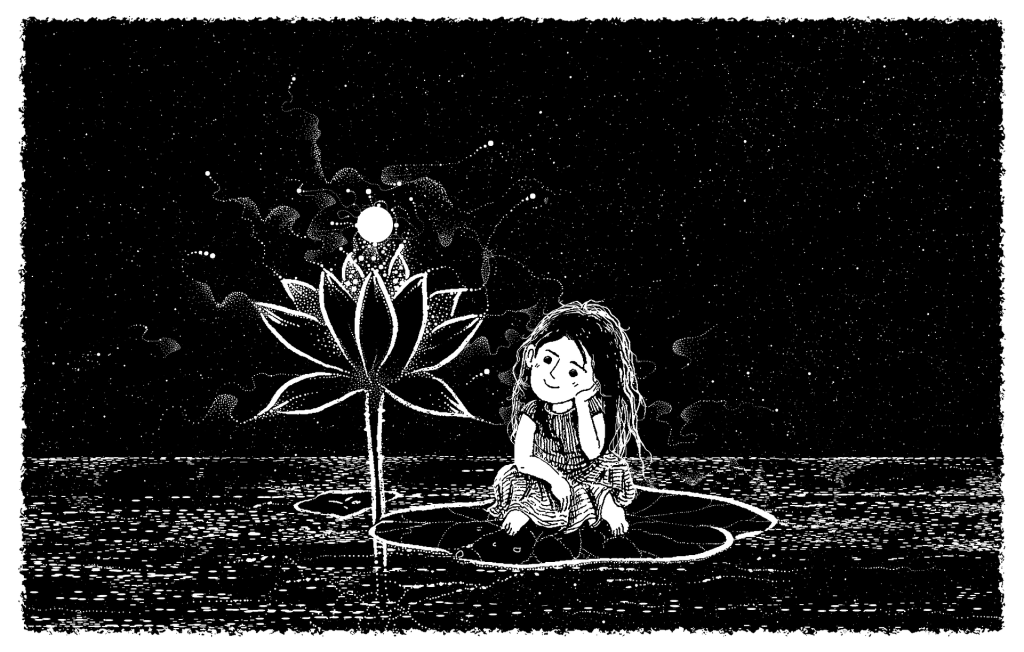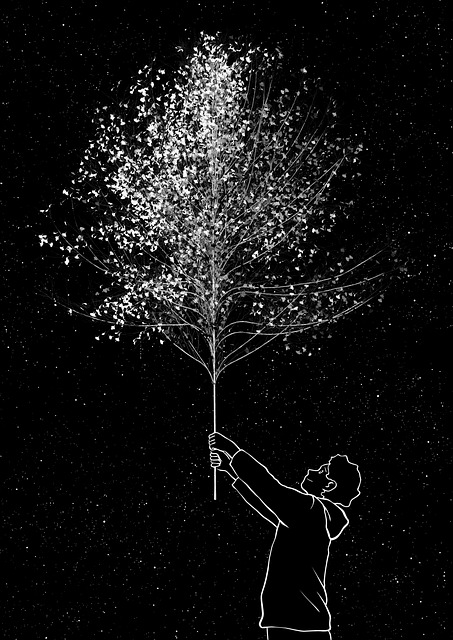
“Play is the exultation of the possible.” Martin Buber
When we were five years old, my friend Kim and I created a secret realm. It was ruled by a fearsome Queen named Calavina. To escape her evil magic we’d ride a rocking horse wildly, then fling ourselves into hiding places where we whispered desperate warnings to each other. Even when we weren’t playing, we honored that noble toy horse with a royal cape (a small blanket) draped over its back. We kept Calavina’s queendom alive for several years. Then one day we tried to enter her world of adventure and peril but found we were only acting. The enchantment had lifted.
Although the imaginary realms of my childhood weren’t very complex, some children create elaborate domains featuring backstories, unique customs, and made-up words where they propel characters through all sorts of dramatic events.
That’s true of 9 year old Cameron. Under his bed is another dimension.
The world he created rests on a sheet of cardboard cut from a refrigerator box. Some days Cameron spends hours playing with it. The ocean is aluminum foil raised in permanently cresting waves, inhabited by an exotic array of marine creatures made from clay. Forests filled with bright trees and plants are constructed from painted cotton balls, balsa, toothpicks, and wrapping paper.
Dotted between the Seuss-like trees are tiny shelters, each a different shape. This world is populated by creatures made out of beads, pipe cleaners, and fabric. They’re named Implas and their dramas keep Cameron busy. His mother says she has to remind herself that Cameron is the one changing it all the time, that his creation isn’t really growing.
Imaginary worlds like Cameron’s are called paracosms and this form of play is termed worldplay. Such worlds are as varied as children themselves. A child may document the statistics of an imaginary team, write and illustrate the adventures of traveling elves, create maps and translations for an alien planet, dream up magical messages hidden in the designs of a Persian rug, draw pictures illustrating a space family’s dramas. Some paracosms have no outer trappings at all, taking place entirely within a child’s mind.
Worldplay represents the apex of childhood imagination, according to expert Michele M. Root-Bernstein. She notes in the book Inventing Imaginary Worlds that worldplay is distinguished from more ephemeral make-believe play by its persistence over time, its congruence with the child’s sense of logic, its elaborative nature, and its personal significance to the child. A number of eminent individuals have revealed that worldplay was part of their formative years. A short list includes:
- composer Wolfgang Amadeus Mozart and his sister Nannerl
- writers Robert Louis Stevenson, the Bronte siblings, Anthony Trollope, C.S. Lewis, W.H. Auden, and Jack Kerouac
- physicist David Lee
- psychiatrist C. J. Jung
- actor Peter Ustinov
- sculptor Claes Oldenburg
- astrophysicist Gregory Benford
- philosopher Friedrich Nietzsche and his sister Elizabeth
- paleontologist Nathaniel Shaler
- zoologist Desmond Morris
- neurologist Oliver Sacks
These worlds are often incredibly detained and time consuming. For example, Charlotte Brontë, along with her brother Branwell, created tiny hand-lettered and hand-bound books out of scrap paper. Each one was no bigger than one inch by two inches. These books expanded on the imaginary world they called the Glass Town Confederacy, populated by Branwell’s tiny toy soldiers which were both the audience for and protagonists in miniature books filled with stories, songs, maps, poems, illustrations, building plans, and dialogue.
We’re probably underestimating how many children actually engage in worldplay. Consider playmates who return again and again to favorite, ever more complex make-believe scenarios. Or children whose imaginary friends persist in intricate parallel existences for years. And professionals who work with kids on the autism spectrum tell me that, at least among children they know well, many create detailed fantasy worlds.
Back in 1907, pioneering psychologist G. Stanley Hall studied the child’s mind at play. He reflected on two brothers who, over the course of several summers, created an imaginary world in a sand pile near their home. Hall declared that their play was the equivalent to months of regular schooling, a form of self-tutoring that taught them self-discipline, hands-on skills, and social collaboration.
In fact, researchers find that creative adults are much more likely to have engaged in worldplay as children. Interviews with ninety MacArthur Genius fellows found more than a quarter of them remembered creating intricate imaginary worlds in childhood while another 20 percent of the fellows report engaging in somewhat less elaborate worldplay. This is twice as high as the average population. It makes sense that childhood experiences of worldplay translate into adult creativity. More than half of the MacArthur fellows told researchers their current careers had to do with imaginary worlds. Scientists, inventors, composers, writers, and other innovators advance their fields by visualizing and creating beyond existing cultural paradigms.
Worldplay, like all make-believe, arises from self-directed play. Make-believe can’t be assigned. It’s a product of fallow time, even of boredom, and is more likely to happen when children have no other distractions.
As psychologists Dorothy Singer and Jerome Singer write in The House of Make-Believe, children who have plenty of time for free play are more imaginative and creative, have more advanced social skills, and are actually happier as they play. The Singers contrast two children who are given free-form playthings like dolls or building blocks. The child who has had plenty of experience with daydreaming and make-believe is comfortable coming up with pretend scenarios, and can easily find inventive ways to play with these toys. The child who has not had much experience with make-believe or daydreaming may find little engaging about the toys after a short time —- in other words, he gets bored quickly. The imaginative “muscles” built by daydreaming, make-believe, and downtime simply haven’t developed.
Make-believe, from the simple to the elaborate, is generated by the fun-powered creative genius native to every child. As children engage in make-believe they shape themselves as individuals while practicing the “what if” thinking so necessary for later decision-making. Yet fantasy doesn’t easily survive scrutiny, especially as children get older. It thrives in solitary play or with a few close companions where it’s safe from interference and judgment. Even when others overhear or know some elements of the imaginative play, secrecy allows children to preserve a personal space where their own sense of order can prevail.
Special powers are bestowed on all inhabitants of childhood. They slip easily into alternative realities with each other, in thrall with a world where they’re omnipotent. Through play they teach themselves to handle life’s larger terrors and triumphs, its injustices and rewards.
The way we raise children can preserve or dull a child’s capacity for imagination. Too often these capacities seem distant from our adult preoccupations and sadly, many of us still struggle to re-inhabit our own imaginations. Yet the world we call real is remade by each generation. What children do when they pretend actually broadens possibilities for the future they’ll grow up to create.
Do we leave room in children’s days for extended periods of fantasy? Do we allow them the freedom of make-believe without questions and scrutiny? Do we preserve the joys of imagination in our own lives? As Cameron’s mother says, “It’s the kids allowed to be their own quirky selves who grow up strong enough to be whoever they want to be.”
This post is one of many originally meant to appear in a book of my essays. That publisher is no longer in business. If anyone knows of a publishing company that might be interested, please let me know.




